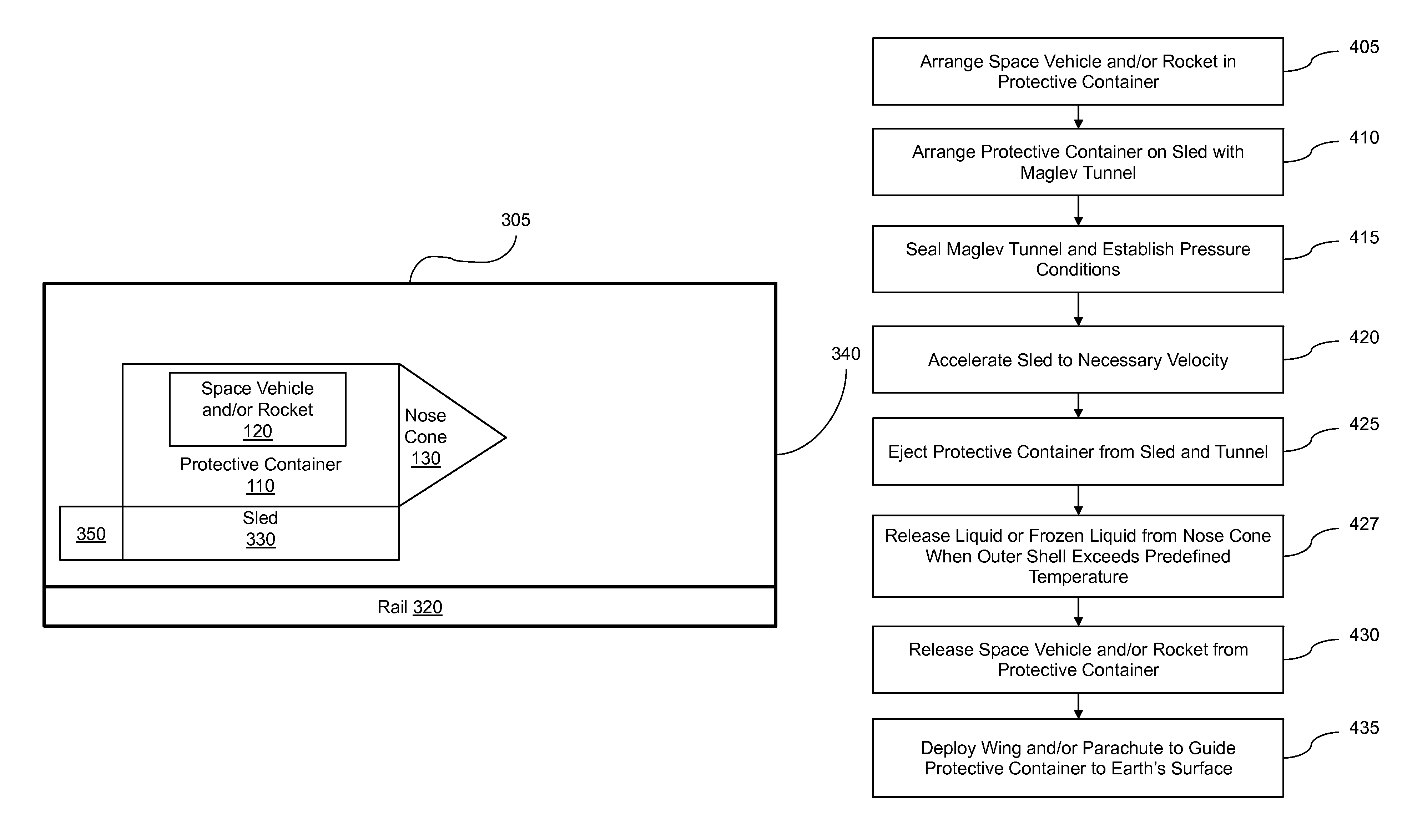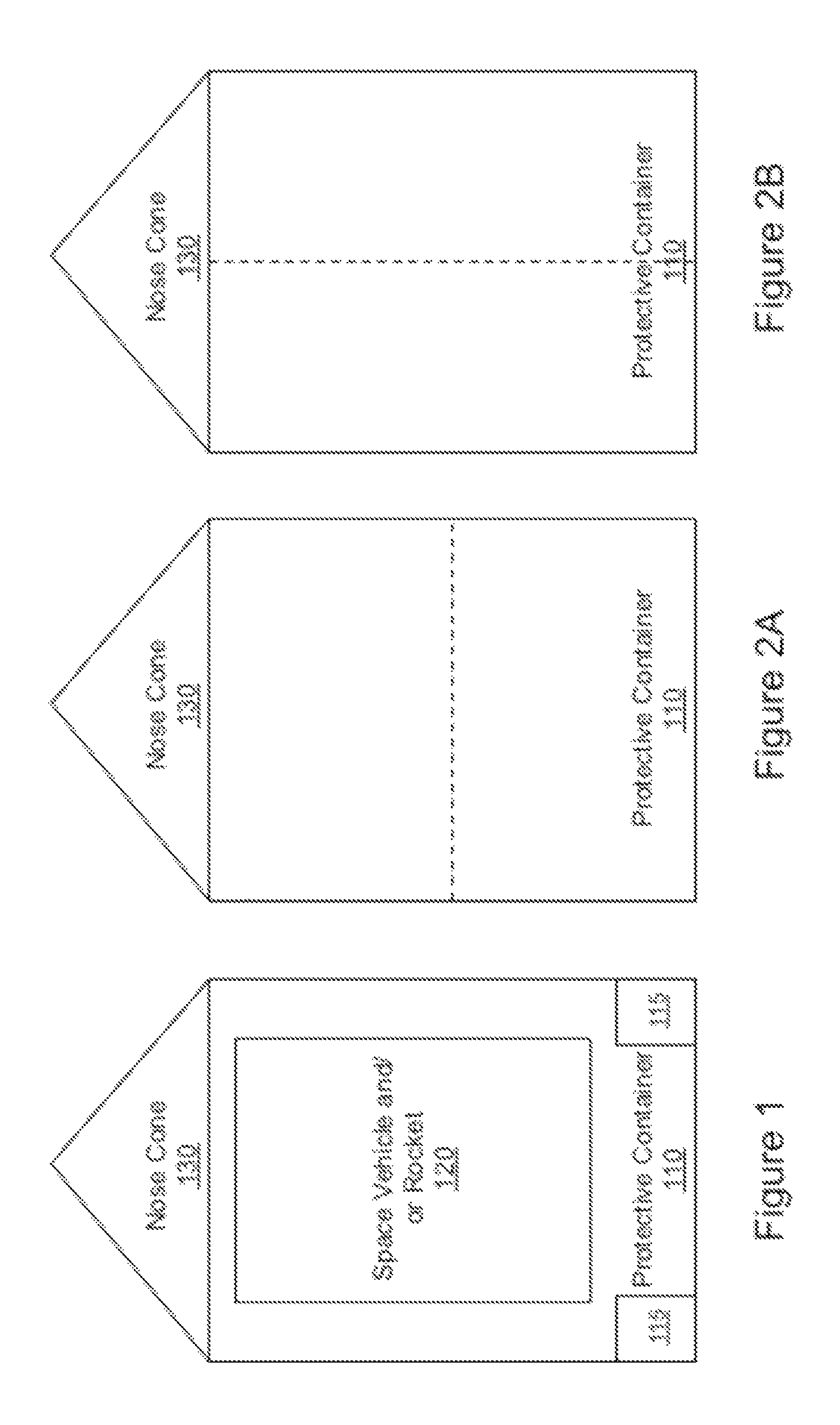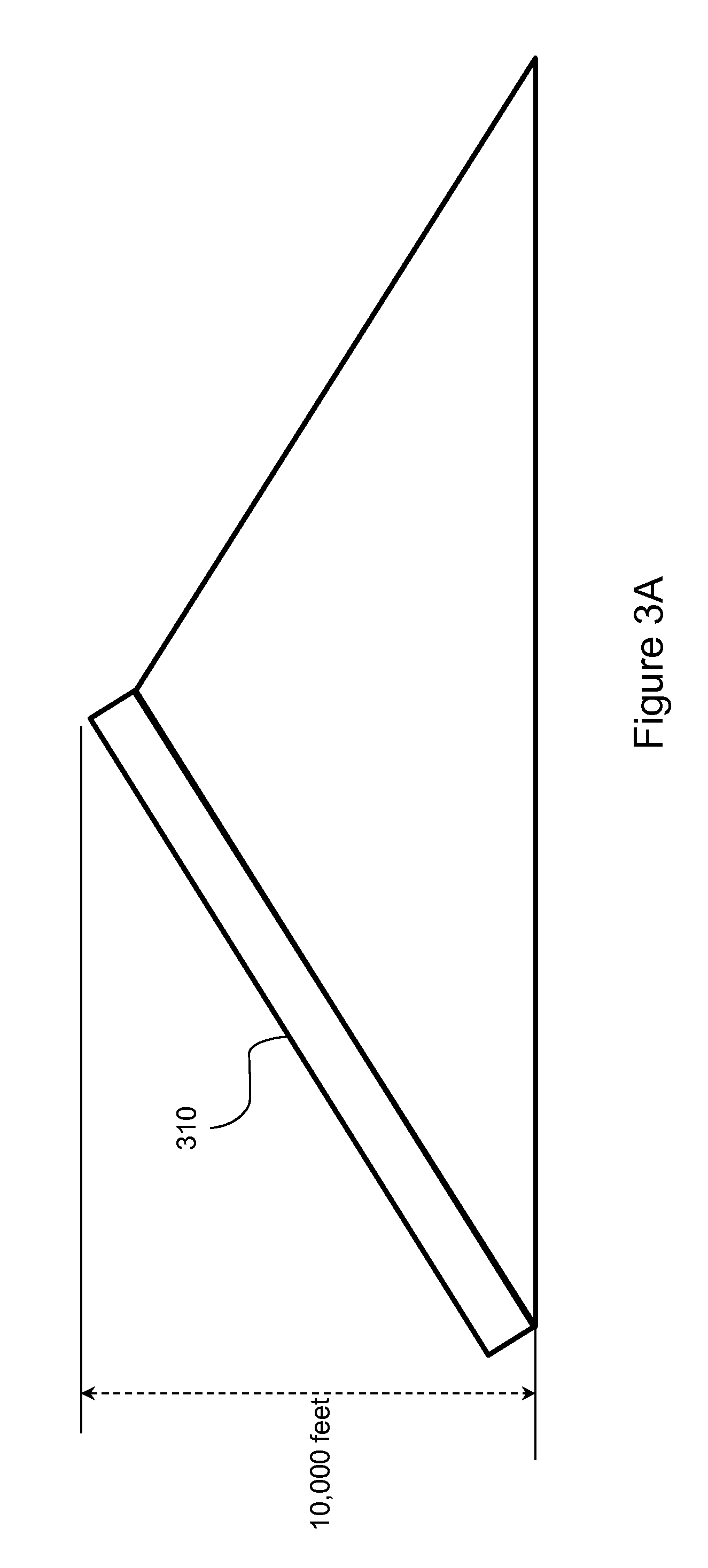Systems and methods for launching space vehicles
a technology for space vehicles and rockets, applied in the direction of cosmonautic thermal protection, cosmonautic vehicles, transportation and packaging, etc., can solve the problems of space vehicles that must reach higher speeds at lower altitudes, space vehicles that burn up, etc., and achieve the effect of increasing the weight of space vehicles
- Summary
- Abstract
- Description
- Claims
- Application Information
AI Technical Summary
Benefits of technology
Problems solved by technology
Method used
Image
Examples
Embodiment Construction
[0012]FIGS. 1, 2A, and 2B are block diagrams of exemplary protective containers in accordance with the present invention. The protective container 110 contains an inner space configured to hold a space vehicle and / or rocket 120, and includes an aerodynamic nose cone 130. The protective container also includes an outer shell configured to withstand atmospheric stresses (i.e., heat and pressure) as the protective container passes through the atmosphere. This outer shell can be made from any desired materials that can withstand the atmospheric stress. A particularly cost-effective material is steel. It should be noted that an advantage of this approach is that heavy weight, resulting from designs that maximize strength and reusability at low cost, is actually a positive attribute in piercing the lower atmosphere.
[0013]Although the figures illustrate a line between the nose cone 130 and the rest of the protective container 110, the nose cone 130 can be an integral component of the conta...
PUM
 Login to View More
Login to View More Abstract
Description
Claims
Application Information
 Login to View More
Login to View More - R&D
- Intellectual Property
- Life Sciences
- Materials
- Tech Scout
- Unparalleled Data Quality
- Higher Quality Content
- 60% Fewer Hallucinations
Browse by: Latest US Patents, China's latest patents, Technical Efficacy Thesaurus, Application Domain, Technology Topic, Popular Technical Reports.
© 2025 PatSnap. All rights reserved.Legal|Privacy policy|Modern Slavery Act Transparency Statement|Sitemap|About US| Contact US: help@patsnap.com



